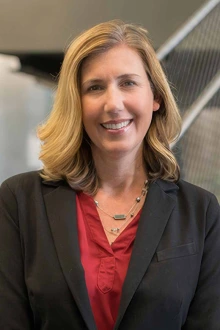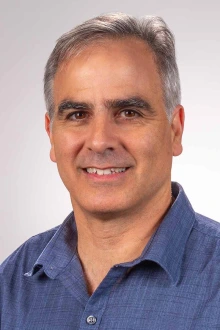Innovating to advance primary care, rural health in Arizona
College of Medicine – Phoenix faculty design changes to emphasize community engagement and help increase the number of providers.

Targeted curricululm changes at the University of Arizona’s College of Medicine – Phoenix are designed to quickly and efficiently increase the state’s primary care physicians.
Photo via Getty Images
It’s not news that American health care is in crisis. The stakes are particularly high in Arizona, where there is an increasing need for primary care providers.
But help for our state is on the way thanks to a new path for some students at the University of Arizona College of Medicine – Phoenix that emphasizes community engagement and primary care, particularly in rural and underserved areas.
“Finally, I feel like I can say the wind is in our sails. We are really gathering momentum in important ways, and it’s been worth the effort and hard, hard work getting to this point,” said Katie Brite, MD, the college’s associate dean of community engagement. “Things are falling in place for maximum impact.”
“We’re headed in the right direction,” said Jonathan Cartsonis, MD, director of the college’s Rural Health Professions Program. “It’s very exciting.”
And a long time coming.

Boosting the number of primary care providers in Arizona is critical because not only does our state have a deficit but it’s among the fastest growing states, says the U of A College of Medicine – Phoenix’s Katie Brite, MD.
Photo by U of A College of Medicine – Phoenix Marketing & Communications
A critical need
Arizona ranks No. 42 out of 50 when it comes to having enough primary care providers to serve its population, according to the U of A Mel and Enid Zuckerman College of Public Health Center for Rural Health.
“We’re at the bottom of the barrel,” said Brite, an associate clinical professor of Family Community and
Preventive Medicine. “What makes us higher risk than any other state for this, and it’s getting worse rapidly, is that we’re among the fastest-growing states as well.”
Brite and Cartsonis have spearheaded efforts to boost the number of primary care providers in Arizona.
“We focus on primary care so much because evidence has shown it’s the only specialty that actually improves health outcomes, decreases mortality and increases life expectancy,” said Brite. “Communities that have a sufficient primary care provider workforce just have better outcomes overall. So, it’s a huge area of concern because it’s our biggest shortage.”
Forging a trail
In 2012, Brite and Cartsonis braved a blizzard to travel to the University of Minnesota Medical School, which in the 1970s became one of the pioneers in addressing physician shortages in rural communities. A hallmark of the Minnesota program was a novel idea — a longitudinal integrated clerkship. That means medical students stay in their assigned rural settings with the same mentors rather than returning to campus periodically to rotate through specialties.
The Minnesota results were so impressive that other institutions quickly followed suit, Cartsonis said.
“Not only does such a model present the opportunity for young physicians choosing to practice in rural settings, but the mentorship that comes from the ability to remain in place really helps them advance rapidly and in a way that promotes health and wellness for both the student and the mentors,” he said.
Brite and Cartsonis came back to sunny Phoenix and immediately got to work.
“Both of us have been around underserved communities and health inequity, so whatever we’ve done here at the U of A has been an extension of that,” Cartsonis said. “We’re lucky to be in the position to be able to guide university resources where they’re needed most.”
Still, change rarely comes quickly or easily. By 2020, with funding secured and appropriate accreditation approvals locked in place, what is believed to be the first longitudinal integrated clerkship in the Southwest launched during the COVID-19 pandemic.
“The medical students were able to shoulder responsibility in a way that they would never have been able to do in an urban setting, and they just grew in so many ways and showed us what we really needed to do with the curriculum,” Cartsonis said.
Meaningful change

As early as 2012, Jonathan Cartsonis, MD, of the U of A College of Medicine – Phoenix, along with Brite, was researching ways to address physician shortages in rural and underserved areas.
Photo by U of A College of Medicine – Phoenix Marketing & Communications
That first clerkship had three students. Now it can handle up to 15 with plans to expand to 20. Other changes for the relaunched program include:
- A redesigned three-year, rather than four-year, primary care curriculum. The class of 2029, the first to enter under the change, will actually finish in 2028.
- A separate admissions track for students interested in primary care and/or rural health in underserved settings.
- An expanded Pathway Scholars Program, which offers support for premed students to ensure solid foundations for success in medical school.
- Built-in breaks for personal and professional development to allow students time for personal wellness and to explore electives.
- Legislative funding revisions allocated to Area Health Education Centers that allow them to have residency programs.
“It’s a new model and an exciting one for Arizona,” Cartsonis said.
College of Medicine – Phoenix Dean Fred Wondisford, MD, MS, MBA, supports the streamlined program.
“This sets up opportunities for students with interest in primary care/rural health to better meet the needs of vulnerable communities when time is of the essence,” he said.
Both Cartsonis and Brite were raised by community-minded parents.
Cartsonis, who spent his childhood in Litchfield Park outside of Phoenix, was raised by a social worker mother and a city planner father who emphasized parks and community centers in what was then a sleepy area.
Brite’s parents were teachers, a path she thought she’d follow — and did in a way since a primary care doctor is, as she puts it, “an educator at the bedside.”
In addition to their academic duties, both are primary care physicians at Wesley Community Health Center, where many patients lack insurance. Patients can’t afford to see specialists, so it’s the primary care physicians who perform vasectomies, cast broken bones or care for any health need.
“We call it ‘top of license practice,’” Brite said, referring to the idea of optimizing capacity and that professionals use their full range of skills and education to provide the best health care for their patients.
She said primary care is infinitely rewarding because of the long-term relationships formed with patients and families — a message she and Cartsonis emphasize to students.
“You get to take care of people along their whole lifespan in a holistic way,” she said. “We need all of our specialists, too, but they focus on particular aspects of a person, and I like the holistic piece of primary care. I also really feel privileged to be on that lifelong journey with them.”

